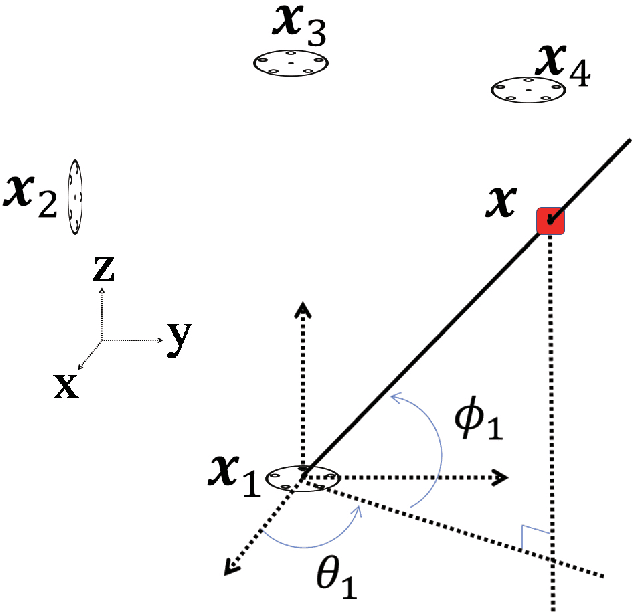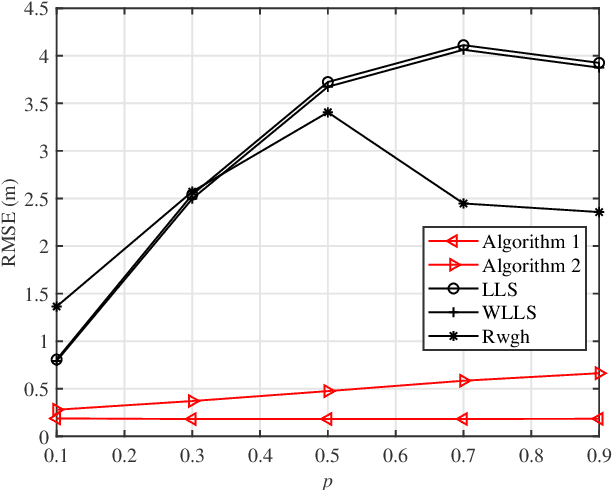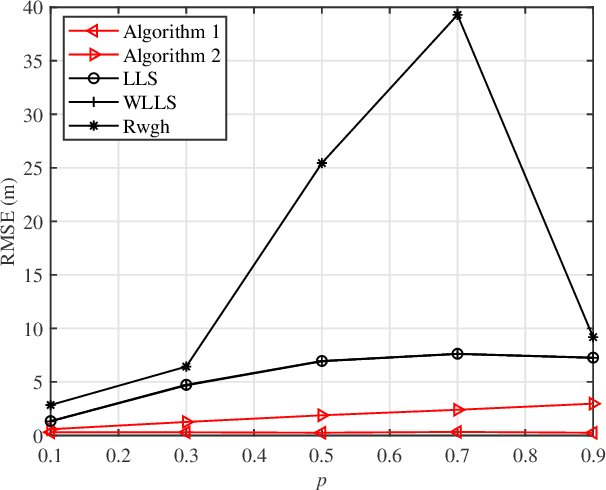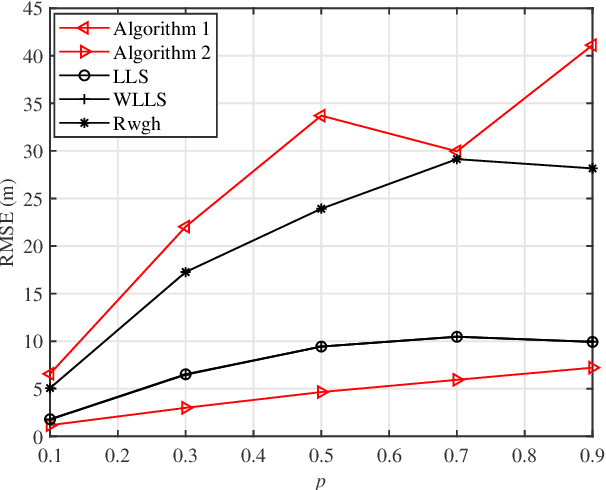Andrea Gabbrielli
Evaluation of Sparse Acoustic Array Geometries for the Application in Indoor Localization
Jun 13, 2024Abstract:Angle-of-Arrival estimation technology, with its potential advantages, emerges as an intriguing choice for indoor localization. Notably, it holds the promise of reducing installation costs. In contrast to ToF/TDoA based systems, AoA-based approaches require a reduced number of nodes for effective localization. This characteristic establishes a trade-off between installation costs and the complexity of hardware and software. Moreover, the appeal of acoustic localization is further heightened by its capacity to provide cost-effective hardware solutions while maintaining a high degree of accuracy. Consequently, acoustic AoA estimation technology stands out as a feasible and compelling option in the field of indoor localization. Sparse arrays additionally have the ability to estimate the DoA of more sources than available sensors by placing sensors in a specific geometry. In this contribution, we introduce a measurement platform designed to evaluate various sparse array geometries experimentally. The acoustic microphone array comprises 64 microphones arranged in an 8x8 grid, following an Uniform Rectangular Array (URA) configuration, with a grid spacing of 8.255 mm. This configuration achieves a spatial Nyquist frequency of approximately 20.8 kHz in the acoustic domain at room temperature. Notably, the array exhibits a mean spherical error of 1.26{\deg} when excluding higher elevation angles. The platform allows for masking sensors to simulate sparse array configurations. We assess four array geometries through simulations and experimental data, identifying the Open-Box and Nested array geometries as robust candidates. Additionally, we demonstrate the array's capability to concurrently estimate the directions of three emitting sources using experimental data, employing waveforms consisting of orthogonal codes.
Two Efficient and Easy-to-Use NLOS Mitigation Solutions to Indoor 3-D AOA-Based Localization
Aug 13, 2021



Abstract:This paper proposes two efficient and easy-to-use error mitigation solutions to the problem of three-dimensional (3-D) angle-of-arrival (AOA) source localization in the mixed line-of-sight (LOS) and non-line-of-sight (NLOS) indoor environments. A weighted linear least squares estimator is derived first for the LOS AOA components in terms of the direction vectors of arrival, albeit in a sub-optimal manner. Next, data selection exploiting the sum of squared residuals is carried out to discard the error-prone NLOS connections. In so doing, the first approach is constituted and more accurate closed-form location estimates can be obtained. The second method applies a simulated annealing stochastic framework to realize the robust $\ell_1$-minimization criterion, which therefore falls into the methodology of statistical robustification. Computer simulations and ultrasonic onsite experiments are conducted to evaluate the performance of the two proposed methods, demonstrating their outstanding positioning results in the respective scenarios.
 Add to Chrome
Add to Chrome Add to Firefox
Add to Firefox Add to Edge
Add to Edge